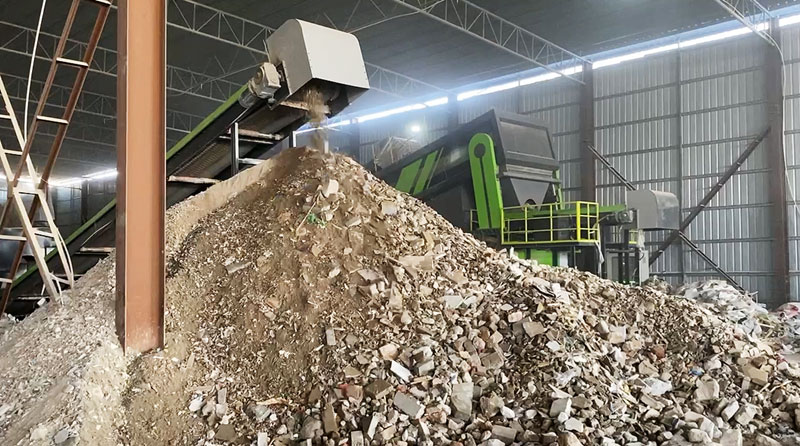 Time:2025-01-07
Time:2025-01-07
 Source:青绿环境
Source:青绿环境
With the acceleration of urbanization, the construction industry has flourished, but it has also generated a large amount of construction waste. These waste materials not only occupy a significant amount of land resources but can also cause environmental pollution. Facing this challenge, the application of modern waste sorting equipment has become one of the key strategies for addressing the issue of construction waste.

I. Composition and Hazards of Construction Waste
Construction waste is mainly composed of concrete blocks, brick fragments, metals, wood, plastics, and other waste materials. If these waste materials are not properly managed, they will lead to the following problems:
1. Waste of Land Resources: Untreated construction waste is often simply landfilled or piled up indiscriminately, occupying valuable land resources.
2. Environmental Pollution: Some construction waste containing harmful substances, such as paint cans and chemical additives, may seep into the soil and groundwater, causing environmental pollution.
3. Resource Waste: Many types of construction waste are actually recyclable resources, such as steel, wood, and concrete. However, if they are discarded without distinction, it represents a significant waste of resources.
II. The Role of Waste Sorting Equipment
To address the aforementioned challenges, it is necessary to introduce advanced waste sorting equipment. These devices can classify materials based on their physical properties (such as size, shape, density, etc.), thereby maximizing the recovery and utilization of resources. Specifically:
1. Improve Efficiency: Automated sorting systems can quickly and accurately separate different types of construction waste, greatly enhancing work efficiency.
2. Reduce Labor Costs: Mechanized operations reduce the need for manual labor, lowering operational costs.
3. Increase Resource Utilization: Materials that have been finely sorted can be directly used for the production of new building materials or other purposes, achieving resource recycling.
4. Environmental Benefits: Effectively prevent harmful substances from entering the natural environment, protecting ecological balance.
III. Case Analysis
Taking a large-scale urban construction site as an example, after introducing various sorting equipment including magnetic separators and air separators, the site successfully converted over 90% of construction waste into reusable resources. Almost all metal materials were recovered, and the crushed concrete and bricks were processed into recycled aggregates, which were reused in areas such as road base construction. In addition, for some special waste that is difficult to handle, such as waste containing heavy metals, it is sent to specialized institutions for harmless treatment.
The reasonable use of waste sorting equipment is of great significance for the effective management of construction waste and environmental protection. It not only helps to alleviate the environmental pressure caused by construction activities but also provides new ideas for the sustainable development of cities. In the future, with the advancement of technology and the support of policies, we have reason to believe that construction waste will no longer be a problem, but rather a valuable asset in promoting the development of green buildings and the circular economy.













 Prev
Prev











